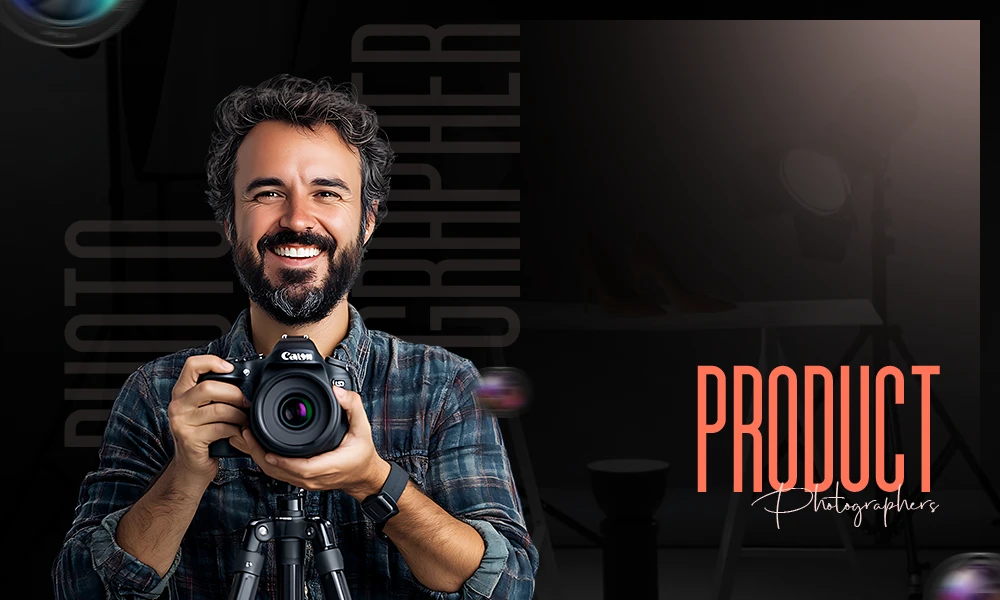The idea, science, and art behind the cameras and the first photograph are one of the intriguing stories in the history of mankind. From describing the scene verbally to presenting the digital form, we surely have come a long way with this discovery.
With the introduction of such prestigious technology, which has taken the various sectors of the modern world by storm. All of this started with the revolution of the first captured photograph, so what’s the story behind it?
Let’s uncover over 2-3 centuries, which gave rise to a powerful creation that started with the first ever photograph.
When Was The First Photograph Ever Taken?
1826 was the year when the first ever photograph was taken, but behind this successful attempt lies the decades of failure. The idea to permanently capture an image was something like attaining a futuristic utopia, and its roots date back to the camera obscura.
A device that was also referred to as a dark chamber in Latin which was a dark box with a small hole. The light would’ve passed through the lens and projected an inverted image on the wall. Its history dates back to 400-300 BCE, but its first very functional model was made by Johan Zahn in 1685.
Main purpose of the camera obscura was to aid artist to help them in their paintings by helping them trace the details. Some of the famous artists who used this device were Leonardo da Vinci, Canaletto, Caravaggio, and Diego Velázquez.
In early attempts to permanently capture the image, silver salts or silver nitrate were used, which darkened the wall when light fell on them. And that is how the first picture in 1826 was captured.
What Was The First Picture Ever Captured?
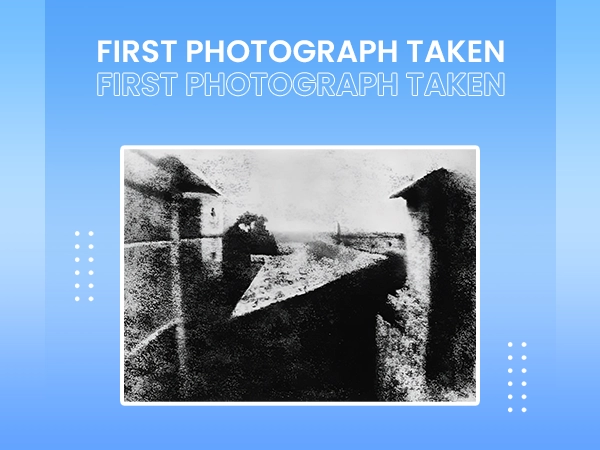
The first ever photograph that was ever captured was by Joseph Nicéphore, and that was of a view outside the window, famously known as “View from the window at Le Gras.”
This renowned image was captured from Nicéphore’s estate in Saint-Loup-de-Varennes, France. And in this we can see a courtyard surrounded by buildings under daylight, the process behind capturing this photograph is also known as sun drawing.
Joseph used a shiny pewter plate that was covered with bitumen of Judea. So the science behind it works something like when sunlight falls on bitumen, it reacts to become solid, and to make it light sensitive, lavender oil was spread on the plate.
Nicéphore installed the plate on the camera obscura for about 8 hours, which hardened the plate. The bitumen plate was then taken out to development with the help of a solution formed by lavender oil and petroleum that removed the unnecessary parts.
Those areas where the light fell had kept the bitumen to make it look darker, while the other areas where less light fell had less bitumen to bring out the distinction. To make the photograph endure eternally, Joseph had to rinse off any light-sensitive material and keep the bitumen intact.
The size of the first ever image captured by a camera was 16.2 cm × 20.2 cm, which is quite big compared to today’s standard size of a photograph.
Initial Reactions and The Revolutionary Results
After this pioneering invention came to the public’s eye, it sparked a wave of awe, curiosity, and disbelief. Soon, in 1839, after Nicéphore passed away, his companion, Lois Daguerre, introduced the copper plate with silver iodine, which cut a lot of processing time.
The image was processed with mercury vapor, giving more clearer and refined image, quickly spreading across the entire Europe. Thanks to the Daguerre contribution, photography became a widely spread commercial activity.
In the 1880s, George Eastman, an American entrepreneur, noticed that the photographs were bulkier and less portable because it was etched on metal plates. He introduced a flexible celluloid film roll coated with light-sensitive emulsion.
The roll was called negative. When the picture came out, it was in inverted form and could be printed out multiple times. This revolutionary was later named Kodak, which was available for consumer use. During that period, people would take hundreds of shots and send the camera to Kodak, which they develop them into prints.
Earlier where the portrait photography that was reserved for the rich made it into lower-income groups as well. Due to the result of portable, fast, and detailed shots, it became a widely adopted technology.
Artists and scientists were the two main fields where the usage of photography brought dramatic development. It revolutionized the way data was preserved and studied.
Evolution of Cameras and Photographs
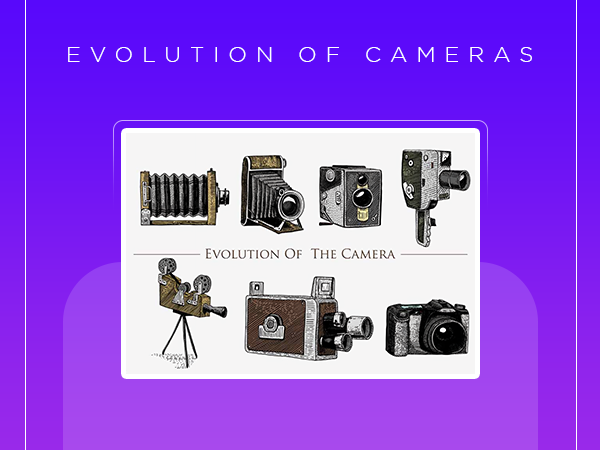
As we were moving towards the 21st century, cameras were getting more advanced and compact, giving more refined snapshots. By the 1920s, cameras were more travel-friendly, and the folding mechanism by Kodak was gone.
- Cine-Kodak was the first 16mm lens launched in 1923.
- Another model of Kodak, popularly known as Kodak Brownie, sold over a quarter of a million units.
- Another revolution was brought by Oskar Barnack, who invented a miniature camera with 35mm film known as Leica.
At the brink of World War I, Leica became a favorite due to its miniature size and sharper focus. It wouldn’t be wrong to say that these cameras set the benchmark for industrial standards.
Amidst the development in the functioning of cameras, videography was becoming a bona fide medium of entertainment. In the early 1900s market saw a boom in cinema as the early screenings portrayed black and white silent movies.
- In 1924, AT&T (American Telephone and Telegraph Company) discovered the method to transmit photos over electrical wire known as the fax.
- This groundbreaking invention laid the foundation for television.
- The image was placed on a rotating drum and scanned line by line using a photoelectric cell.
- Later on, these were converted into electrical signals, which were transmitted over standard telephone lines.
1935 was the year when the first modern color camera roll came to the market. But the foundation to make photos and videos in color started way back in 1861.
James Clerk Maxwell proposed that all colors can be produced by red, green, and blue (RGB). Based on this theory, three black-and-white photos were taken through red, green, and blue filters of a tartar ribbon.
These photographs were projected back to recreate the full image, and the results were successful. However, this method was not practical as it takes a lot of time to develop those images, but since then, various efforts to bring vividness have been made.
- Gabriel Lippmann used light interference in 1886, which was more accurate but took a lot of time.
- In 1907, Auguste and Louis, French manufacturers, used dyed grains of starch coated on a glass plate. It acted as a filter, and when light passed through it, the image exposed black-and-white emulsion, and when viewed in a backlight, it formed natural colors.
- And then Kodachrome was introduced.
In 1930, cameras came with a disposable light bulb that made indoor and dark light photography surreal.
During World War II, Fujichrome and Ektachrome launched better, quicker, and more flexible cameras than Kodachrome. Soon enough, another transfiguring chapter was going to be added to the history of cameras, and that was the DSLR.
In the 1980s-1990s world of photography was taken over by digital sensors, and brands like Canon, Nikon, and Kodak launched their cameras with CMOS and CCD sensors.
Thanks to Eugene F.Lally of NASA, the idea of capturing digital images began taking shape as early as the 1960s.
- DCS 100 by Kodak was the first ever DSLR launched in 1991 that was commercially available.
- The photos could easily be stored on a memory card.
- Chips were gradually enhanced to take burst shots and real-time previews.
- Gradually, DSLRs became less bulky and more compact. The shift has been so advanced that high-quality shots can be taken with a smartphone.
Digital photos opened the room for post-processing and editing, allowing professionals to retouch images. So this was the complete journey of the evolution of cameras and how the first photograph ever taken pioneered today’s visual industry.
List of Popular Photos
We learnt about the first picture that was ever taken, now let’s briefly talk about some of the other popular first photos in history.
First Color Photo

As mentioned above, tartar ribbon, developed by James Clerk Maxwell in 1861 using RGB filters. Maxwell had Thomas Sutton photograph a tartan ribbon three times from each color and finally processed it to form the final image.
First Photo of Earth
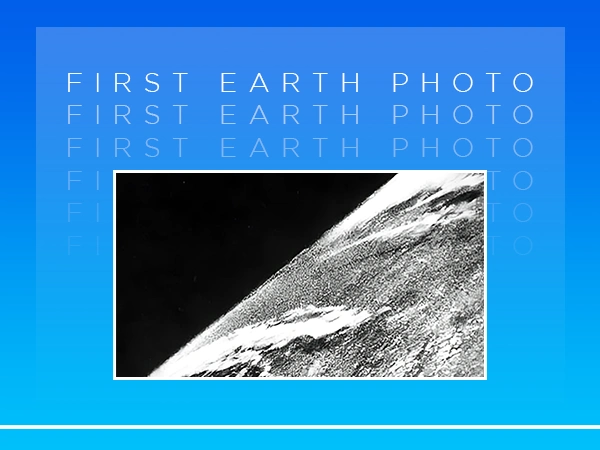
The first ever photo of Earth/space was taken on 24 October 1946, when a V-2 rocket made by German scientists and used by Americans captured the globe at 65 miles. It was captured in black and white with a 35mm motion picture camera.
First Photo of Person

Ever wondered what the first photograph of a person would look like? The above picture was captured by Louis Daguerre in Paris around 1838. It took 7-10 minutes to process the photograph, which resulted in all the moving subjects, like cars and people, disappearing. The only person who was captured in a photograph was an unknown person standing still.
First Photo on Instagram

The first ever post that was uploaded on Instagram was made by Kevin Systrom, the co-founder of the platform. The first photo to resurface on Instagram was of a dog sitting near the woman’s leg which was uploaded on July 16 2010. Who knew this simple snapshot was the beginning of the social media revolution?
First Photo of Black Hole
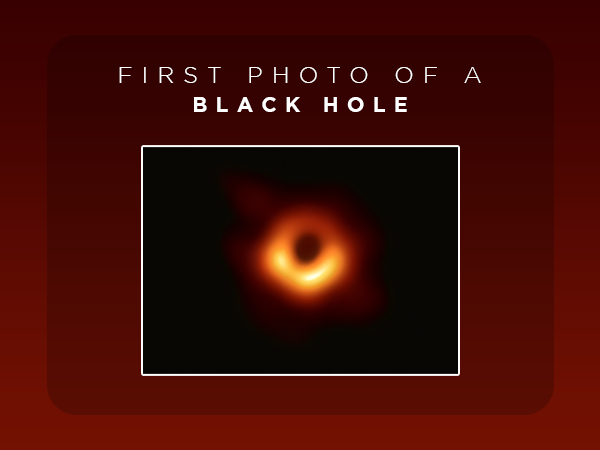
April 2019 was a groundbreaking phase for space enthusiasts as the first-ever picture of a black hole hit the media. Located 55 million light years away, this splendid image was captured by the Event Horizon Telescope. However, this was a blurry image, but one could easily see the dust surrounding the hole around supermassive black hole in the Messier 87 galaxy.
Conclusion
The rise of photography from the pre-existing camera obscura that led to creation of digital cameras has revolutionized the ability to capture what our eyes see. The CCTV cameras used for security purposes, to cinema cameras are used to showcase the best entertainment sequences.
Imagine what the world would be like without the effort by Joseph Nicéphore to capture the first ever photograph, which was later improved by Louis Daguerre, and finally, an attempt to produce the first color photograph by Clerk Maxwell never happened.
FAQs
Q1. What was the aspect ratio of the first digital camera?
Ans: The aspect ratio of digital cameras tends to remain the same, that is, 3:2.
Q2. Why did first photograph took so long to capture the scene?
Ans: The reason behind this lies within the composition of the camera, and the material that was used was light-sensitive (bitumen). It required prolonged hours of exposure to finally harden and ready the image.
Q3. Is the first photograph still preserved somewhere?
Ans: Yes, the original first photograph by Joseph Nicéphore is preserved at the Harry Ransom Center at the University of Texas at Austin.
Q4. The first color photograph was?
Ans: The first colored photograph was of a tartan ribbon captured by James Clerk Maxwell in 1861.





